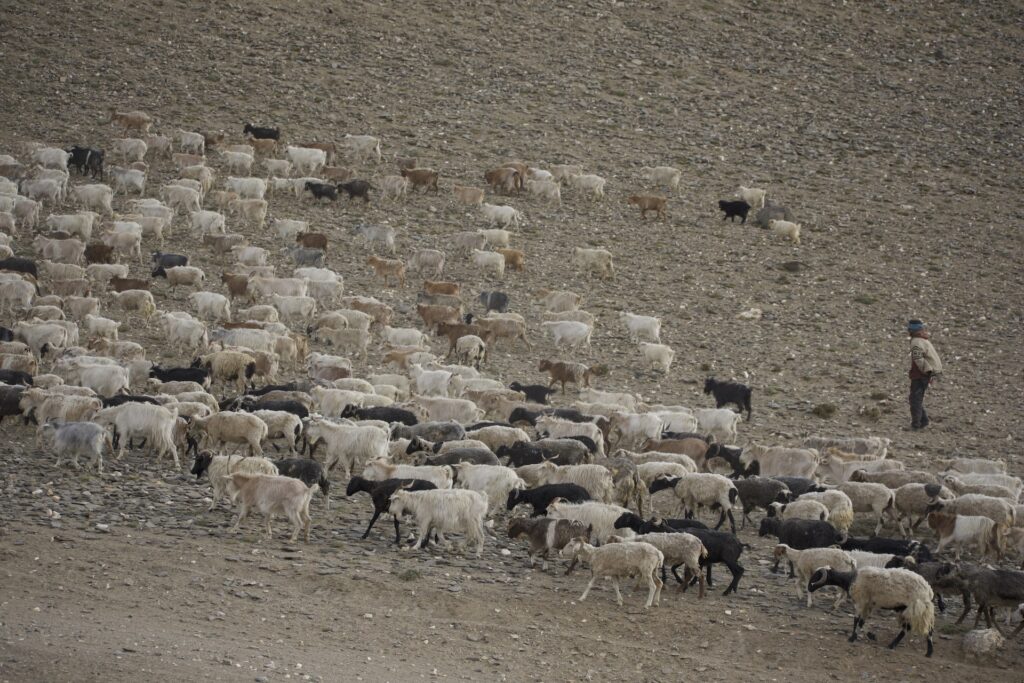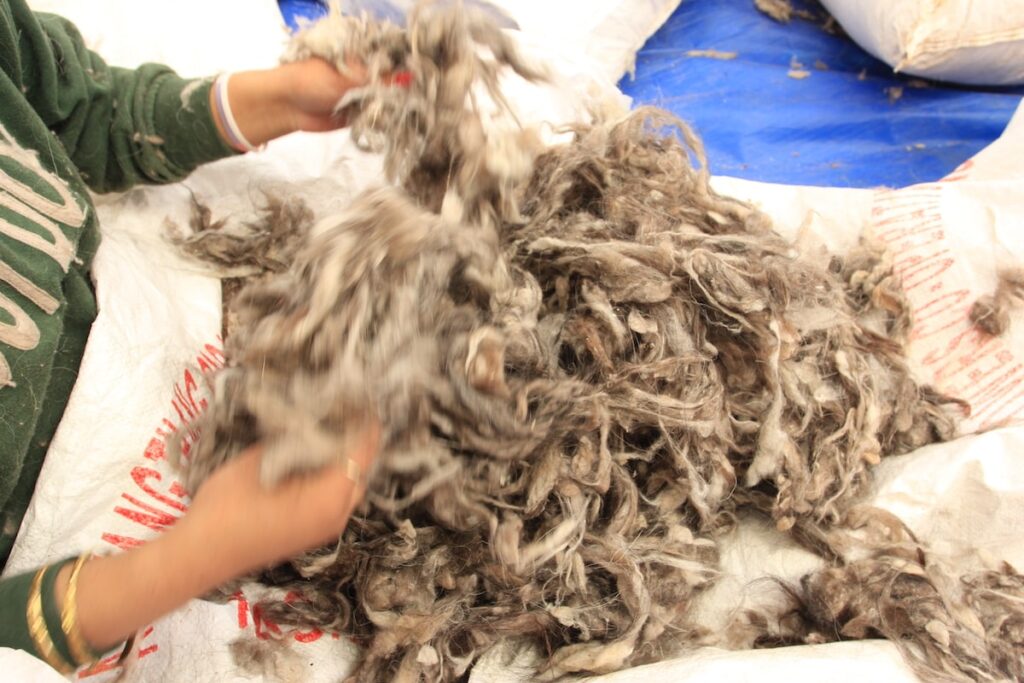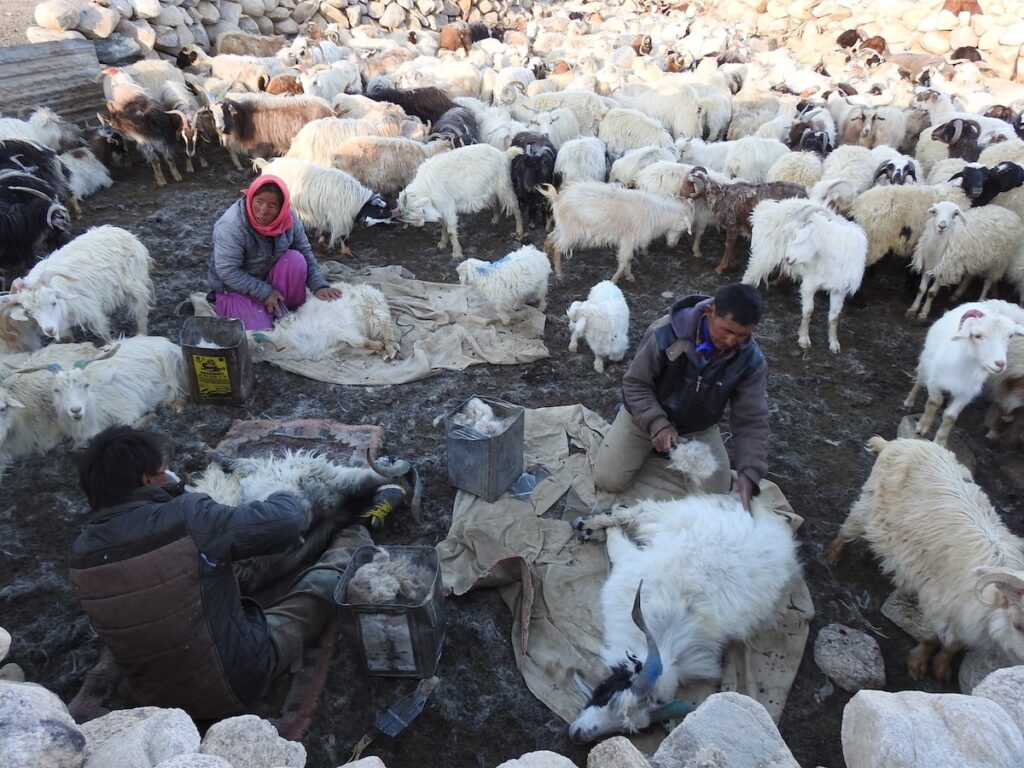
Pashmina is deeply interwoven with the history and culture of Ladakh. The raw fibre comes largely from the Changthang region of Eastern Ladakh, which represents the western extension of the Tibetan plateau, an important high-altitude grazing ecosystem. Ladakh pashmina is known for its fine micron size. The fabric has shaped the geo-politics of this region since the 17th century. In more recent times, Ladakh pashmina has largely been traded into parts of Kashmir where it has been spun and woven into products and hence acquired the name cashmere – a term more widely used to represent wool produced from regions along the Tibetan plateau, Mongolia and Central Asia.

Pashmina finds historical mention in a treaty signed in 1684 by the Mughals which stated that all pashmina from Western Tibet would find its way through Ladakh, while Kashmiri traders would have exclusive rights to purchase pashmina from Ladakh. The trade of pashmina appears to have prospered from this point on. Circumstances changed in 1834, when the legendary Dogra general, Zorawar Singh, launched military campaigns in the region driven by the desire to control the pashmina trade. The Treaty of Leh signed between the Tibetan kingdom and the Dogras in 1842 recognised Dogra dominion over the region, while reaffirming previous trade arrangements. The subsequent Treaty of Amritsar, signed in 1846, provided for the British to get a war indemnity of Rs 7.5 million and an annual payment of one horse, twelve perfect shawl goats of approved breed (six males and six females) and three pairs of Cashmere shawls).

With this treaty, the Dogra kings could rule over all the hilly or mountainous regions situated eastward of the river Indus and westward of river Ravi. In addition to the control of pashmina trade, the Dogra kings imposed a series of economic measures that had a debilitating effect on the Ladakhi economy. These treaties and the ensuing circumstances led to the development of a world-renowned Cashmere industry built on a “partnership” between highly skilled Kashmiri artisans and the industrious Changpa pastoralists that continues to this day. The tragedy of course has been that this asymmetric arrangement has relegated Ladakh to the role of a raw material provider with an extremely limited economic and cultural share of the high value generated by the Cashmere products in regional and global markets.

